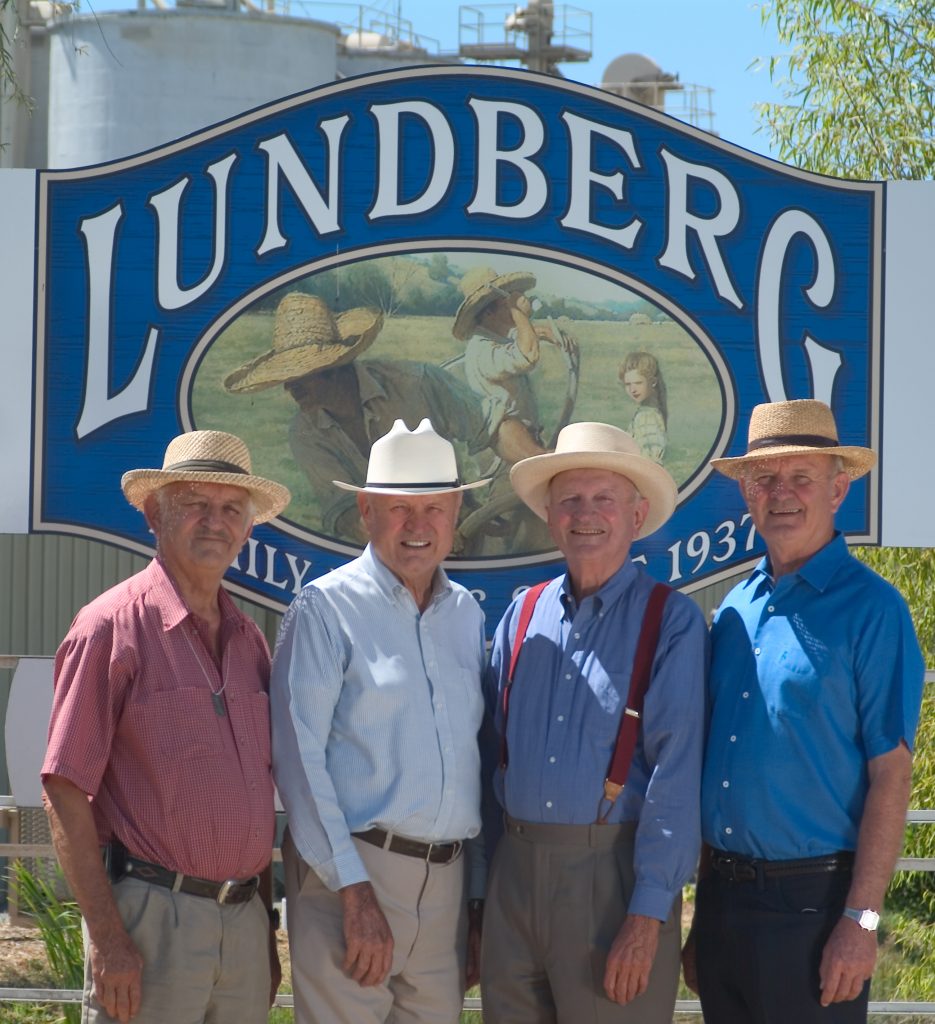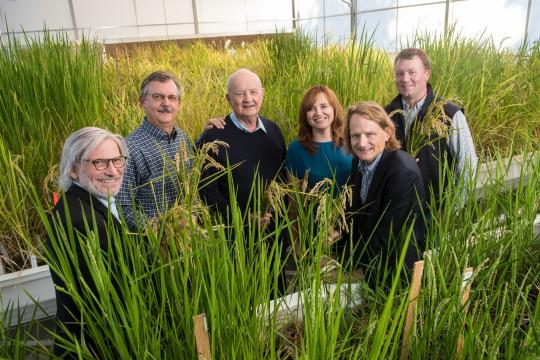Innovators are lauded for their vision and ability to see the future – but in 1930’s Nebraska, vision was a tricky subject. Some days, Albert Lundberg could hardly make out an object three feet in front of his face.
Albert didn’t need glasses – there was nothing wrong with his eyesight.
A storm of earth and dust raged across prairies, farms and ranches, turning once fertile plots into barren wastelands obscuring Albert’s vision.
By 1937, Albert and his wife, Frances, packed up what they owned and hit the road. Out west, the skies were clear, so the Lundbergs didn’t see many alternatives but to make their way to the Golden State.
After arriving, Albert was labeled an “Oakie,” but he was from Nebraska and wasn’t too fond of that particular slur.
“He hadn’t planned to come west, but it is here that he would finally find what he was looking for,” said Albert’s grandson, Bryce Lundberg, Vice President of Lundberg Family Farms.
Over tilling of the land led to one of the worst farming disasters in American history. Stretching from Texas to Nebraska, the Dust Bowl rendered 35 million acres useless and left Albert with a new sense of responsibility.
Once settled in the small town of Richvale (located 18 miles south of Chico), Lundberg vowed never to repeat the mistakes of the Roaring 20s. Spanning four decades after World War II, it was common for farmers to dispose of their remaining rice straw after harvest by setting it ablaze. Plumes of smoke would blanket the sky throughout the Sacramento Valley.
Nightmarish flashbacks of the Dust Bowl’s destruction led Albert to commit to a clearer path.
Albert first tilled in the rice straw before planting winter crops. With oats and legumes in the winter, Lundberg could decompose the rice straw while rejuvenating the fields for next year’s planting season.
Unfortunately, this process was not feasible for all of his fields. Thinking back to one thing families across the prairies had wished for, Albert knew water would be the answer.
Joining with neighboring farmers who stopped burning, the Lundbergs discovered that a little water could go a long way.
“By creating a vast shallow pond across the rice fields, grandpa discovered he could do more than just whittle down the rice straw,” said Bryce.
Repeated on fields throughout the valley, rice farmers were able to clear up the skies and subsequently allow migrating birds to rediscover a floodplain that had disappeared a century ago.
“By flooding the fields, farmers across the valley floor were able to recreate a historic wetland habitat. It is astonishing today to see the way the Pacific Flyway has returned in just a few short years,” added Bryce.
With food and prime habitat now plentiful for birds, the skies turned dark once again, but with millions of ducks, geese and shorebirds flying in and out of the Lundberg’s and neighboring farmers’ fields.
It was truly a sight for Albert to see.
The Lundbergs say it is in those years that they discovered the importance of “farming in partnership with nature.”
Bird populations soared while the family’s rice products, Lundberg Family Farms, began appearing in grocery stores throughout the county.
But not all were sharing in the moment.
Just a few steps from the Lundberg’s fields, a native fish population dear to the family was facing a steep population decline.
“When grandpa first arrived, he found California’s Chinook salmon in great abundance, but by the early 2000s, that was no longer the case.”
With spawning numbers of the salmon falling, the Lundberg family and their neighbors from the Western Canal Water District were ready to take action.
“With nearly 60,000 acres of fields along Butte Creek, they all felt a responsibility to help the salmon.”
A coalition of farmers, the Metro Water District and the US Department of Interior worked together to create a siphon that would help a few hundred fish reach key spawning sites. As ambitious as the project was, they not only hit the mark – they exceeded it.
Today, some 10,000 Chinook Salmon make the journey through Butte Creek each year. It is one of the greatest success stories in California to date.
While it remains a murky future for the salmon, the Lundbergs imagine a brighter future for the fish. Through collaboration and mimicking successes of the past, they believe it can be done.
While it may seem they are viewing this optimism through rose-colored glasses, this also happens to be the same family that saw through a bit of dust to create not only one of the most popular rice companies in the country but helped bring back the Pacific flyway.
Sometimes, all it takes is a little vision.
Listen to “A Vision Beyond the Dust Cloud” podcast here.







